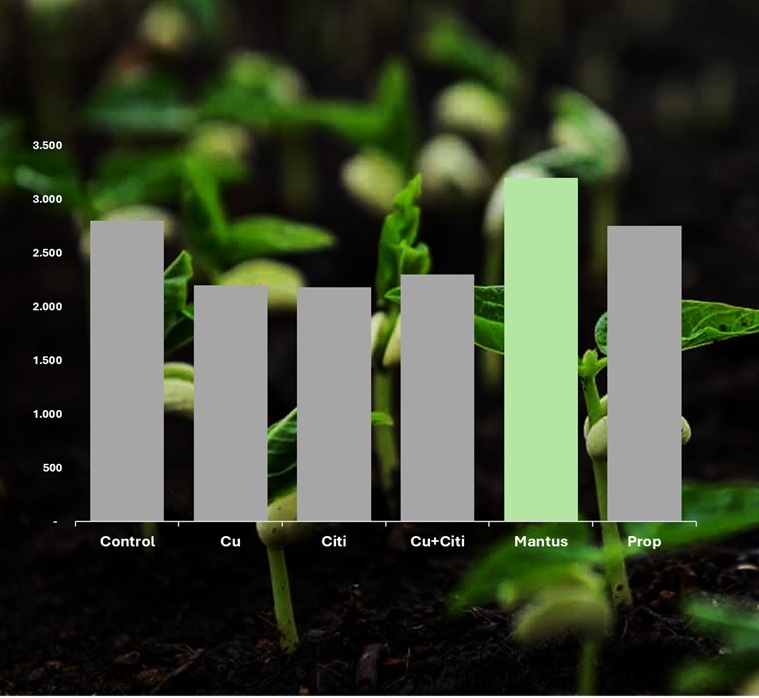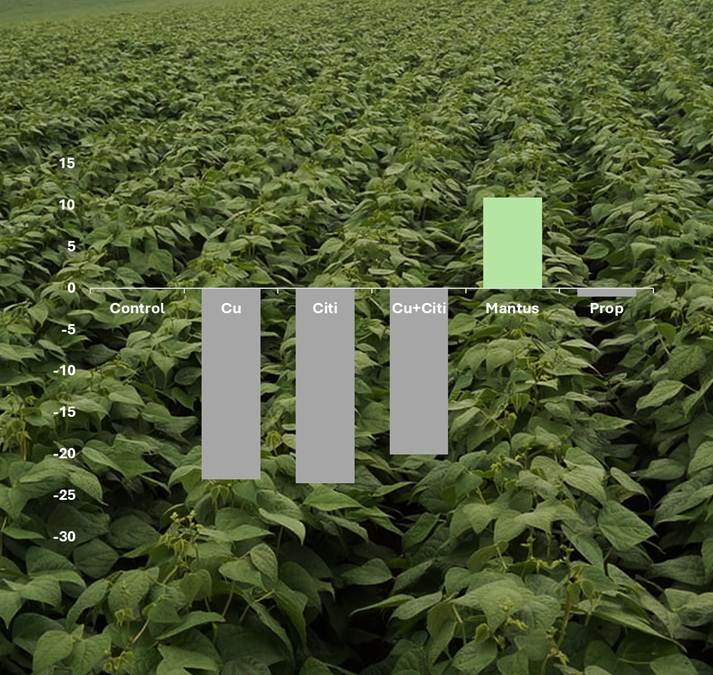IPNC 2025
Bean and done it… more
Scientists will be scientists. Experiments and trials are their lifeblood.
And as we explained in our previous blog, these trials are vital in ensuring the success of FertiGlobal’s Total Crop Management approach. We need science, we need evidence, we need proof.
Where better to source that evidence than from a scientist who’s conducted his own experiments for no other reason than to satisfy his own interest?
That’s what led Professor Carlos Ribeiro Rodrigues, of the Goiano Federal Institute at Rio Verde, Brazil, to present a set of studies about FertiGlobal’s EnNuVi Technology at this month’s International Plant Nutrition Colloquium, held in Porto, Portugal.
Boosting Natural Defence
EnNuVi products regulate and influence crop genes, allowing it to trigger and control plants’ defence and resistance systems. In conjunction with one of his students, Professor Rodrigues began a trial with the EnNuVi products Mantus and Semia.
In seeking to get the most practical benefit from the trial, Rodrigues and his student – Humberto Pistore Eleuterio – chose to work with the common bean, Phaseolus vulgaris. Why? Because despite being a staple crop in dozens of countries, the smallholders who grow it struggle to make it productive. They’re also the farmers least suited to reliance on harsh chemicals, such as fungicides.
A product such as Mantus, which harnesses the known abilities of copper compounds in combating disease and combines them with polyphenols, or Semia with its zinc, present real opportunities to reimagine the production of staple crops in a way that benefits people and planet too.
Mantus – The Trial
Effects on photosynthesis, growth and yield were assessed. A rigorous protocol was established, involving a randomised complete block design deploying five treatments: copper (Cu), cytokinin (Cyt), Cu + cytokinin (Cu+Cyt), copper + polyphenol (Mantus), and propiconazole.
Applications were made at V2 (two fully expanded trifoliolate leaves) and V5 (axillary bud development) growth stages.
Photosynthetic pigments and chlorophyll fluorescence were measured seven days after treatment. Photosynthesis and above ground dry mass were assessed at the second measurement, while at harvest thousand-grain weight, pod number and grain yield were recorded.
Results showed that during the vegetative stages, propiconazole and Mantus showed superior performance in phosynthetic pigments. No differences in photosynthesis, dry mass, pod number or stems were observed between treatments.
However, Mantus out-performed all other treatments in yield, thousand-grain weight, and overall agronomic efficiency.


Semia – The Trial
In subjecting Semia to a similar assessment, Rodrigues and Eleuterio were seeking to understand its potential for stress alleviation.
The common bean is highly susceptible to both abiotic and biotic stresses; climate change is likely only to increase their incidence and intensity. Plant scientists have previously studied ‘resistance inducers’, such as silicon (S) and nitric oxide (NO).
Silicon is known to improve a plant’s mechanical resistance, toughening leaves and stems. It also reduces transpiration and increases photosynthesis.
Nitric oxide works to activate the plant’s systemic acquired resistance (SAR).
Meanwhile, Semia contains polyphenols and zinc, both of which are known to boost antioxidant enzyme activity. Antioxidant levels rise sharply when plants are stressed.
Again, a randomised block design was utilised for the trial, comparing silicon (Si), nitric oxide (NO), Si+NO, and Zinc+Polyphenol (Zn+Poly) against a control. Treatments with Si, NO, and Si+NO were applied at V3 and R8 stages, while Zn+Poly was applied at V3 (three fully expanded trifoliolate leaves), V4-R (reproductive, full pod), and R8 (full maturity).
Photosynthetic pigments, chlorophyll A fluorescence, and photosynthesis were
assessed seven days after R8. At harvest, pod number, thousand-grain weight, and yield were evaluated.
Rodrigues and Eleuterio found that both Semia and the silicon/nitric oxide combination reduced chlorophyll A indices, while Semia also improved chloroplast structure.
However, what really matters to the farmer in the field is the effect on yield. Here Semia came out on top for both yield and pod number, thanks to its effects on overall photochemical efficiency and photosynthesis.
In conclusion…
Thank you to Professor Rodrigues and Humberto Pistore Eleuterio for their diligent studies into Mantus and Semia!
Of course, we’re delighted to see our own results working with these products – and our knowledge of how the entire EnNuVi portfolio works – confirmed by independent experiment. There’s still a lot of uncertainty associated with the biostimulant category, but at FertiGlobal we’ve always focused on the science rather than the ‘puff’. Results like this not only serve to vindicate our own ‘science first’ approach, but do much to assure others that biostimulants have an exciting future in making agriculture more sustainable.



